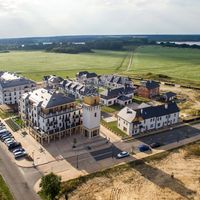Siewierz
6.98

Overview
Siewierz is a picturesque town in the Silesian Voivodeship, with a rich history dating back to the 12th century, when it gained the status of a market settlement. As the seat of the Kraków bishopric in the 16th century, Siewierz played a significant political and economic role, and in 1276 it was granted town rights. The town boasts numerous historical monuments, including the bishops' castle and several Baroque churches, such as the 12th-century Church of St. John the Baptist and the Church of St. Matthew the Apostle. Siewierz is situated on the Tarnogórski Ridge on the Czarna Przemsza River, which enhances its scenic location.
An important event in the town's history was the 1289 battle between Silesian forces and the coalition of Władysław Łokietek. In the 14th century, the bishops began constructing the castle, which became a symbol of power over the Duchy of Siewierz. In the 17th century, Siewierz suffered from wartime disasters, and in the 18th century, its development was hindered by Russian repressions, resulting in the loss of its town rights. After both world wars, the town underwent transformation, regaining its town rights in 1962.
Modern-day Siewierz is a tourist center with the Przeczyce-Siewierz Reservoir, as well as the Chamber of Tradition and Ancient Culture, which promotes local crafts. Siewierz is also home to numerous cultural events, including the annual Days of Siewierz Land, featuring performances by well-known artists. The town is also known for traditional delicacies, such as Siewierz żurek (sour rye soup) and roasted Siewierz goose, which are listed as traditional dishes by the Ministry of Agriculture.
Transportation in Siewierz is provided by both national roads and new railway connections, increasing its accessibility. Interestingly, despite its historical significance, Siewierz has also maintained the traditional character of an agricultural community for many years. Today, it is a town with an intriguing blend of history, culture, and modernity.
Location
You can also find here:
2025 Wizytor | All Rights Reserved
